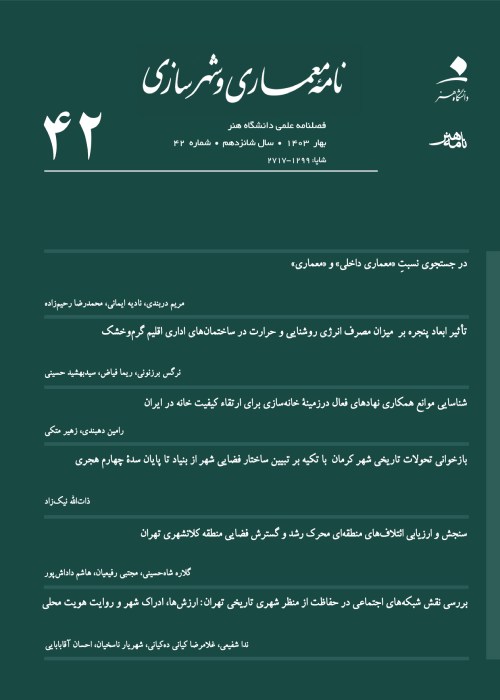Training for Consious Adaptation from Architectural Precedents: Approaches and Strategies
Author(s):
Article Type:
Research/Original Article (دارای رتبه معتبر)
Abstract:
Searching for and analyzing similar examples is a common strategy in architecture education. Today due to simple access to the pictures of examples, students use examples more than before. However, designing with example has a dual effect on design outcome. The main question is how to educate students to correct their adaptation from precedents? This issue has been investigated in inspirational design, case base design, design precedents and design analogy areas. In all the researches the three main stages include: (1) selecting the source, (2) analyzing the source, and (3) creating a new design, that are considered as the main adaptation stages in this research. The adaptation can occur in superficial or structural ways. In the first stage, i.e. selection, the important effective factors are the distance between source and target, designer’s expertise, designer’s goals, the type of source, and the type of source data. Sources are categorized into between and within domain based on the distance factor between source and target. The source selection is affected by designer’s approach and is related to the reading method of source. The data of source is categorized into four types: pictures and maps, seeing the real cases, the real cases during real function in real context, and other related architectural precedents. The reading of precedents can take place by expert analyzer or designer with no enough skill in reading. In the first method, the expert reads architecture to produce architectural knowledge. This knowledge can be used in design indirectly. In this research the second method is considered, while the tools and approaches of the first method can be used to educate architecture students. Each reading pattern or strategy needs special tools and information. The types of information that are obtained from precedents are categorized into six categories: form, function, space, meaning, cultural-social, and historical aspects. Each type of information can be read superficially or structurally. The correct and comprehensive reading depends on designer’s ability. Creativity has different definitions and the main core of most of these definitions is the concept of “novelty”. The recent definitions considered both aspects of novelty and value of ideas. To have creative idea after reading stage, researchers have emphasized on different strategies based on problem-solving, incubation, transformation, and idea generation skills. One of main effective factors in the creation stage is designer’s creativity. Inability in creation is the common problem of students. The two stages of reading and creating are not separated and occur at the same time. We concluded that designer’s characteristics are the basic factors and the strategies that can be used in architecture education include: selecting diverse precedents, comprehensive data from precedents, reading different factors to obtain a whole perception, scrutiny of analysis, reading structurally, adaptation training, and enhancing ideation skills. Architecture education has a difficult path to empower students for successful adaptation, and architecture educators must have the necessary knowledge and plan to enhance the students’ capabilities.
Keywords:
Language:
Persian
Published:
Journal of Architecture and Urban Planning, Volume:11 Issue: 22, 2019
Pages:
91 to 106
magiran.com/p2020178
دانلود و مطالعه متن این مقاله با یکی از روشهای زیر امکان پذیر است:
اشتراک شخصی
با عضویت و پرداخت آنلاین حق اشتراک یکساله به مبلغ 1,390,000ريال میتوانید 70 عنوان مطلب دانلود کنید!
اشتراک سازمانی
به کتابخانه دانشگاه یا محل کار خود پیشنهاد کنید تا اشتراک سازمانی این پایگاه را برای دسترسی نامحدود همه کاربران به متن مطالب تهیه نمایند!
توجه!
- حق عضویت دریافتی صرف حمایت از نشریات عضو و نگهداری، تکمیل و توسعه مگیران میشود.
- پرداخت حق اشتراک و دانلود مقالات اجازه بازنشر آن در سایر رسانههای چاپی و دیجیتال را به کاربر نمیدهد.
In order to view content subscription is required
Personal subscription
Subscribe magiran.com for 70 € euros via PayPal and download 70 articles during a year.
Organization subscription
Please contact us to subscribe your university or library for unlimited access!


